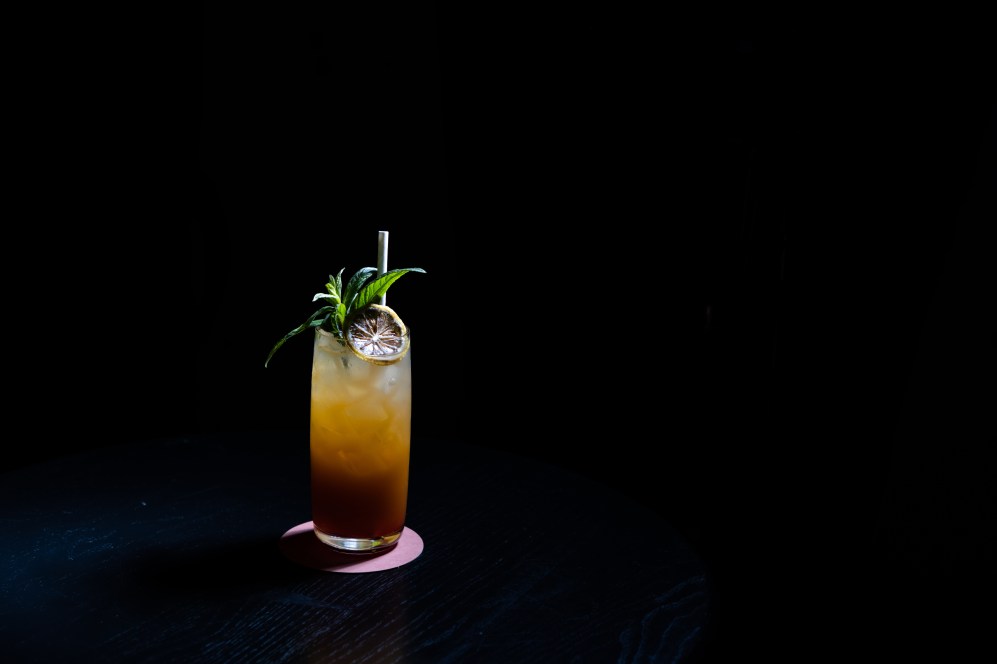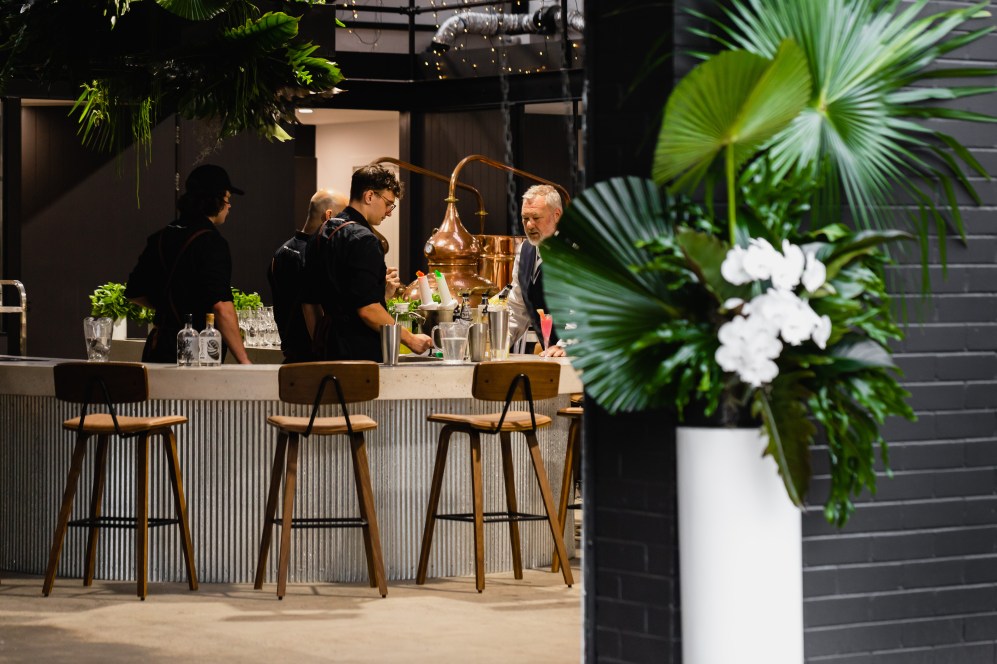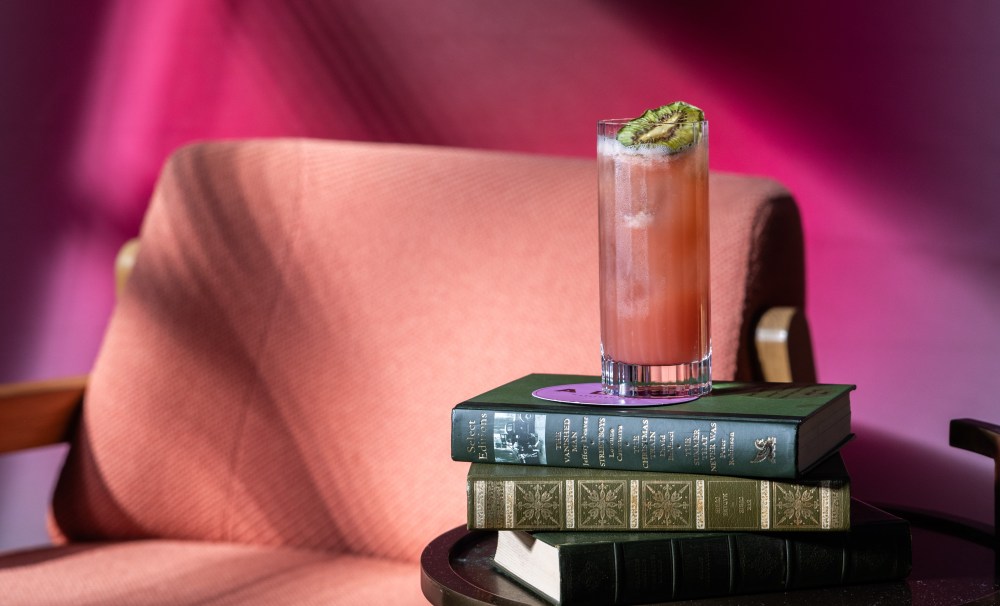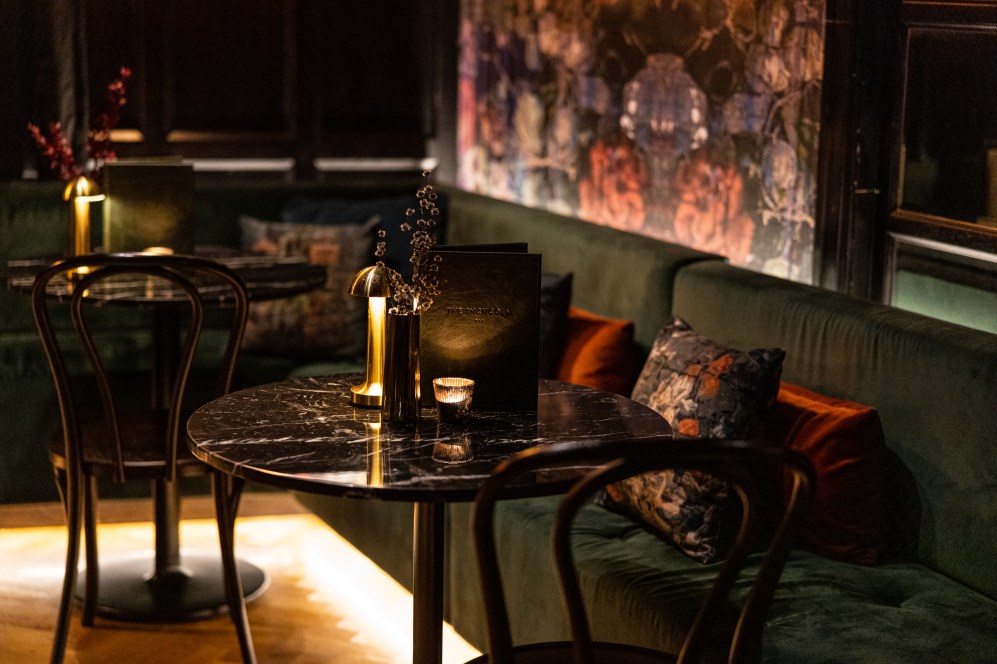The no- and low-alcohol movement (or NoLo) has well and truly shaken off any assumptions it was a trend. Patrons have been considering their drinking habits for a while now, with many making the decision to reduce their alcohol consumption or cut it out completely.
Venues around the country have taken note by providing guests with varied menu options. As non-alcoholic beer, wine and spirits continue to rise in popularity and prevalence, bartenders are finding innovative ways to create and serve high-quality drinks.
The industry has traded sugar-heavy mocktails, soft drinks and juices for zero-proof cocktails that are just as good as the real deal.
Hospitality speaks to Andrea Gualdi from the Ovolo Group and Carolyn Whiteley from Seadrift Distillery about working with zero-alc spirits, creating cocktails that stack up to the classics and why they think booze-free drinks are here to stay.
Non-alc spirits have completely changed the game for bartenders, who can now craft cocktails for all customers using a wide range of highquality options. “My philosophy is that if you don’t need meat to enjoy a good dish, you don’t need alcohol to enjoy a good drink,” says Andrea Gualdi, Ovolo Group’s beverage director.
“Non-alcoholic options give every bartender the ability to play around with non-alcoholic cocktails the same way they would with alcoholic ones. It opens up a lot more room for creativity.”
The beverage director recently developed a range of zero-alcohol cocktails for Ovolo venues, a move that signals the importance of catering to the drinking preferences of all patrons. “It’s really important for us to have non-alcoholic options because it is not just a temporary trend,” says Gualdi. “It’s really becoming its own category.”

While bars are providing added options, other establishments are completely alcohol-free. Carolyn Whiteley is the owner of Seadrift Distillery in Sydney’s Brookvale — Australia’s first non-alcoholic distillery. “There has been a massive cultural shift in the way we approach alcohol,” she says. “At first people were like, ‘Why would I need a non-alcoholic spirit, beer or wine?’ and now it’s completely accepted.”
Seadrift distils non-alcoholic spirits that have carved out their own pocket in the local market and contributed to a much bigger picture. “There’s a role for these types of products today that allows people to be included in social events and to cut back without questions as to why they’re not drinking,” says Whiteley.
Gualdi’s zero-proof drinks have been designed to fit in with each Ovolo restaurant and bar. “For me, it was important to make sure the cocktails did not compromise the original identity of the venue,” he says. An example is a Middle Eastern-inspired martini bar at Za Za Ta in Brisbane’s Fortitude Valley. “We introduced teas and other Middle Eastern ingredients.”
Seadrift Distillery’s So-Bar is located inside the facility and sees non-alc spirits whipped up into a range of cocktails that are familiar to most patrons. “We have a core menu with a non-alcoholic margarita, porn star martini, watermelon and mint gimlet and an espresso martini,” says Whiteley.

The team experiments with products from different businesses and develops recipes for bars, harnessing relationships with local producers to evolve its own range, too. “We have a number of brands and partnerships that are providing us with different spirits, mixers and bitters,” says Whiteley.
The scope for non-alcoholic cocktails has changed considerably over the past few years, and it’s all thanks to the advancement of different spirits and liqueurs in the category. “Before the arrival of non-alcoholic spirits, bars were basically mixing up juices they would use for cocktails and putting a little umbrella in the glass,” says Gualdi. “It was not really something people were spending time creating.”
Gualdi has welcomed the change with open arms and cites brands such as Seedlip and Lyre’s as his go-tos. “Seedlip creates very unique flavours whereas Lyre’s mocks the flavour of alcoholic spirits,” says the bartender. “We use both brands because it gives us a broad range of flavours to play with.”
Seedlip’s Spice 94 and Lyre’s bitter vermouth are two of Gualdi’s most-used products. “Spice is very complex and has a beautiful flavour,” he says. “I’m Italian, so I like to go for the bitter or the non-alcoholic vermouth from Lyre’s to make a non-alcoholic Negroni. It’s surprisingly close to a regular Negroni.”
Seadrift distils three products made from local Australian ingredients that have no added sugar. “We have a very fortuitous circumstance in Australia where we have access to such beautiful produce and a really consistent, great-quality supply that’s
unique to our place in the world,” says Whiteley. “We have the opportunity to work with fresh botanicals.”
The Seadrift Classic is distilled with fresh coriander, kaffir lime and local sea kelp foraged from the shores of the Northern Beaches. “It’s a really light spirit-based product,” says Whiteley. “It’s quite session-able, so it’s one you could drink several glasses of. It’s designed to go with seafood, fragrant stir fries and curries.”

The brand has also come out with its own non-alcoholic gin product in response to the rising popularity of the spirit. “You can mix it with tonic water and it’s got quite a deep intensity to it,” says Whiteley. “It has peppery notes from the juniper and the rosemary and fresh basil provides natural sweetness.”
The gin is used as a base for the limited-edition Wild Hibiscus product. “It has tropical notes, and we get a lot of mixologists wanting to use it in cocktails because it has balance,” says Whiteley.
Variety is a key touchpoint for zero-proof menus and allows guests to explore the versatility of the category. “People will go between different types of non-alcoholic spirits,” says Whiteley. “They want to experiment, and they want to try different things. It is a category that Australia is doing well in and we need to support the industry to ensure producers survive and continue adding value to it.”
Bartenders need to pay special attention to equilibrium when it comes to developing non-alcoholic cocktails. “Once you remove the alcohol from a cocktail, it’s really down to the ability of the bartender to balance flavours and deliver a good product,” says Gualdi.
“Look for complexity. When you play [around with] non-alcoholic products, sometimes it’s easy to have a one-dimensional beverage and that’s why we take inspiration from classic cocktails. You need to maintain balance between acidity, sweetness and mouth-feel.”
Whiteley believes quality is of the utmost importance and that non-alcoholic options
should not be an afterthought. “Start with high-quality ingredients from spirits to juices,” she says. “People don’t want to give up beautiful spirits for something average.”
A seasonal approach should also be taken. Ovolo’s menus are in constant rotation and reflect the way patrons drink at different points of the years. “It’s a combination of lots of different styles and it changes seasonally,” says Gualdi. “You have classic long drinks, sipping styles such as a martini or a Negroni [as well as] sours, which are refreshing. We try to create a broad selection to please the majority of people.”

Gualdi tips Alibi’s mandarin kombucha which uses a house-made kombucha for added depth of flavour. “We ferment it for approximately 10 days and change the flavours constantly,” says Gualdi. “We let it sit and then we use a machine that carbonates it so it becomes very fizzy. We serve it over frozen grapes instead of ice so guests can eat them after they finish the drink.”
So-Bar also has a kombucha-based cocktail on the menu, but Whiteley tips the watermelon and pink gimlet as a personal favourite. “It provides a huge amount of indulgence without being overly sweet,” she says. “It has Seadrift Coast in it which cuts through the sweetness of the watermelon really well.”
The demand for non-alcoholic cocktails is largely a reflection of shifting consumer habits, with venues and producers coming to the table. Patrons are reducing their alcohol consumption for various personal reasons and it’s a market operators should tap into if they haven’t already done so. “If you don’t offer a non-alcoholic element on the menu, you are pretty much turning business away,” says Gualdi. “The market is now looking for it and there are a lot of people who are turning to these options.”
Whiteley echoes the sentiment and encourages operators to delve into the realm. “It’s important for bartenders to meet consumer demand because customers are driving this change, not the hospitality industry,” she says. “We shouldn’t have people coming in and ordering water, soft drinks or lemon, lime and bitters. They should have options and there’s a lot to offer.”
Sponsored Content

Discover Dairy Farmers’ range of shredded cheese
Sponsored by Bega

Beachfront Melbourne Club catering & restaurant opportunity
Sponsored by Future Food
Trending Now
Resources
Lorem ipsum dolor sit amet, consectetur adipiscing elit. Fusce ac ornare lectus. Sed bibendum lobortis...
Lorem ipsum dolor sit amet, consectetur adipiscing elit. Fusce ac ornare lectus. Sed bibendum lobortis...
Sign up for our newsletter
